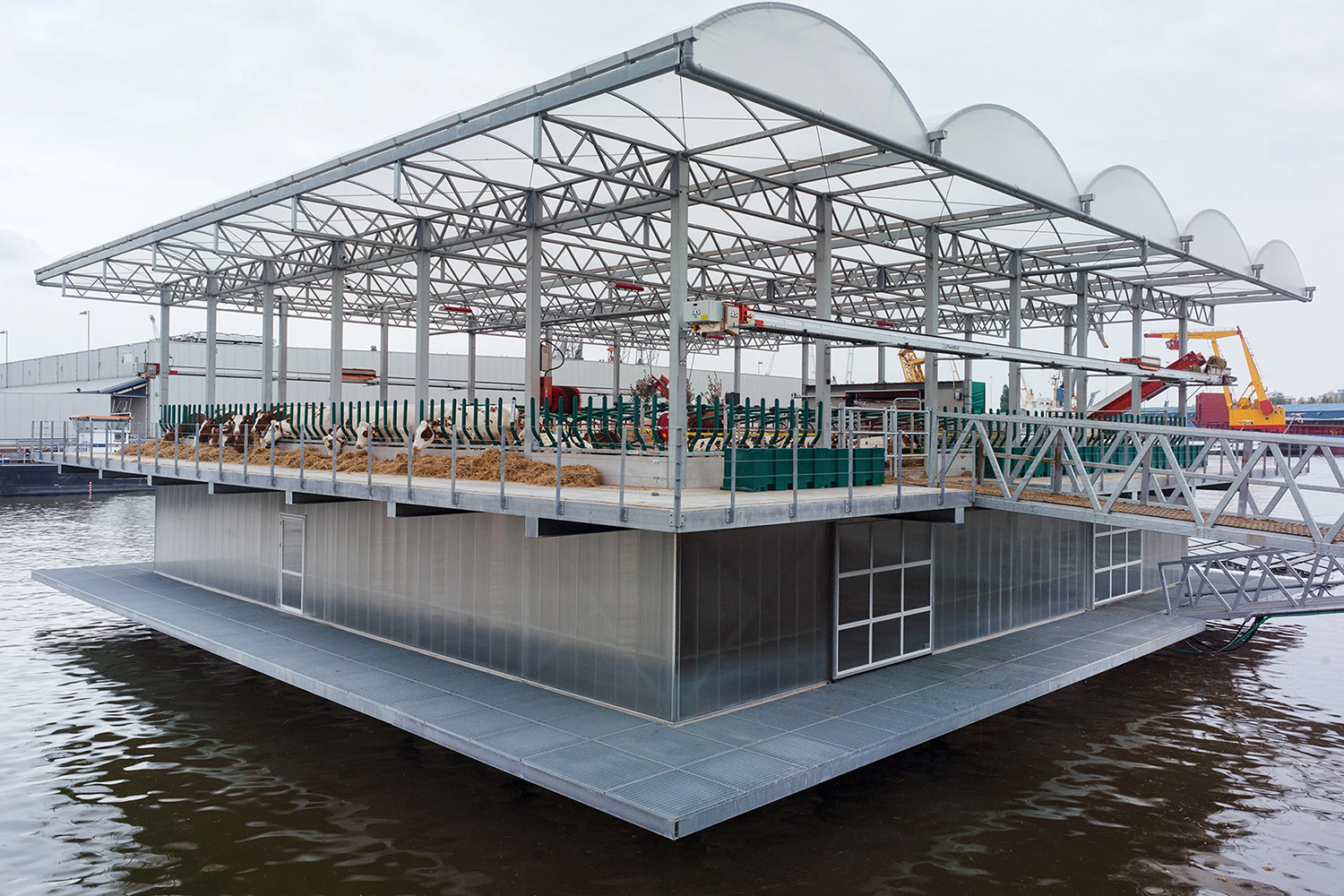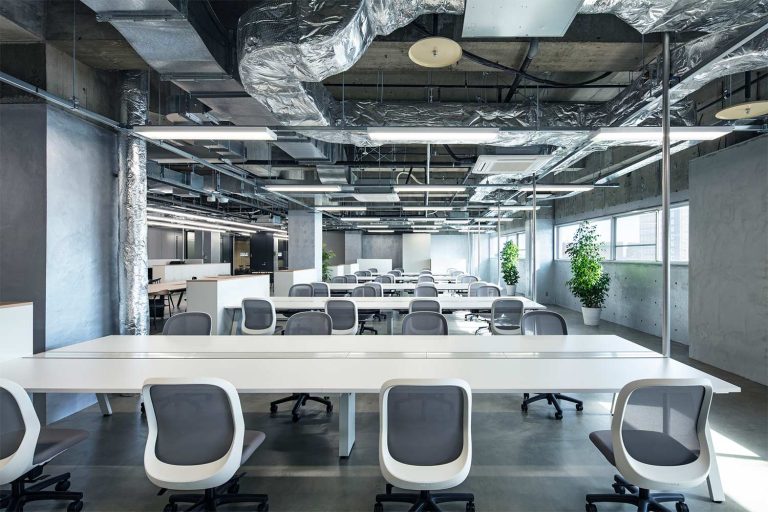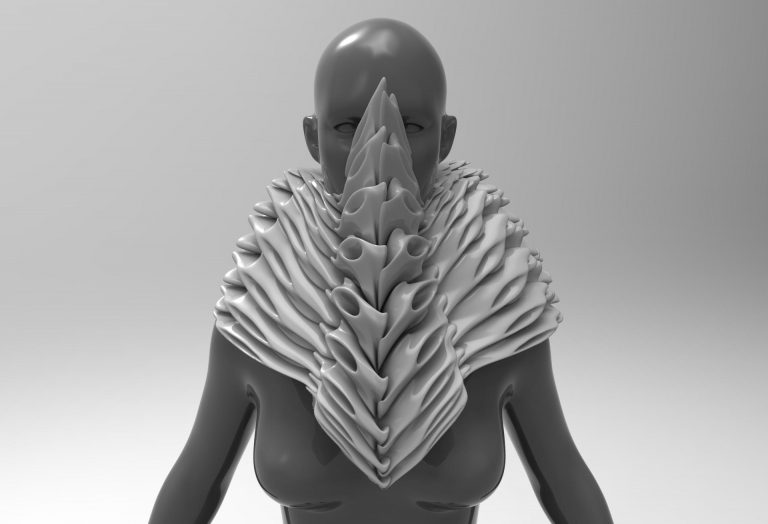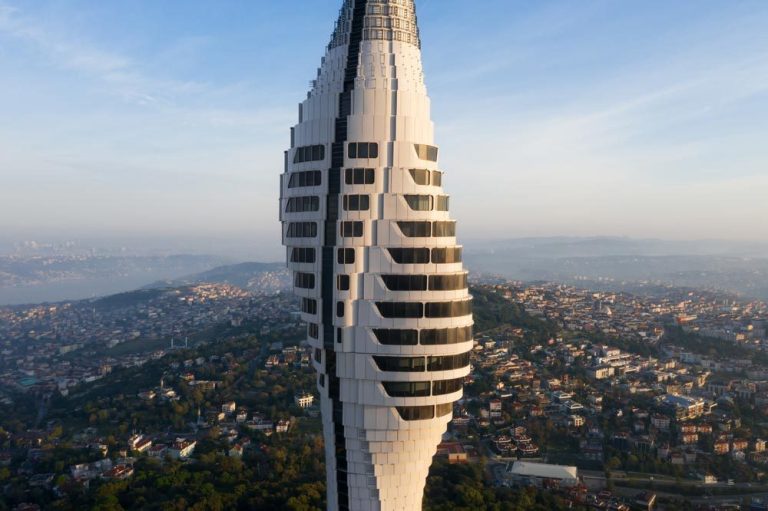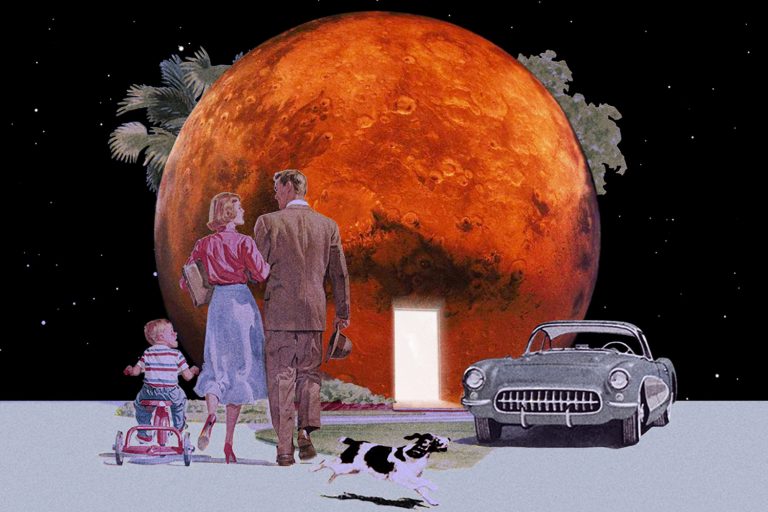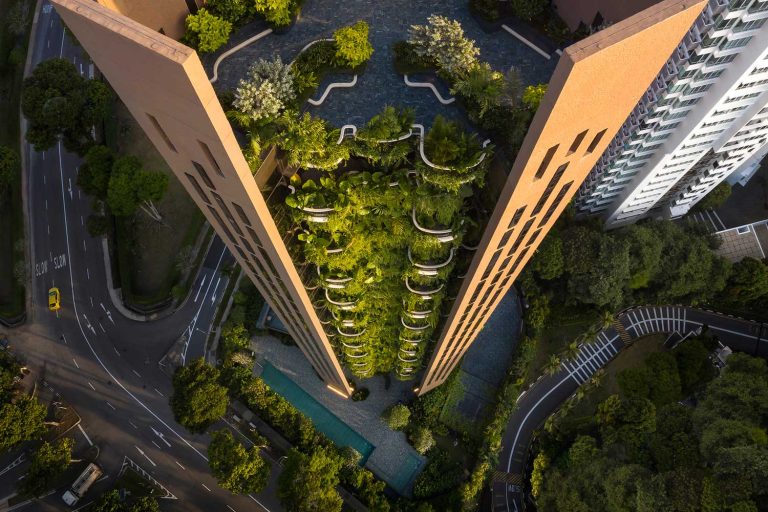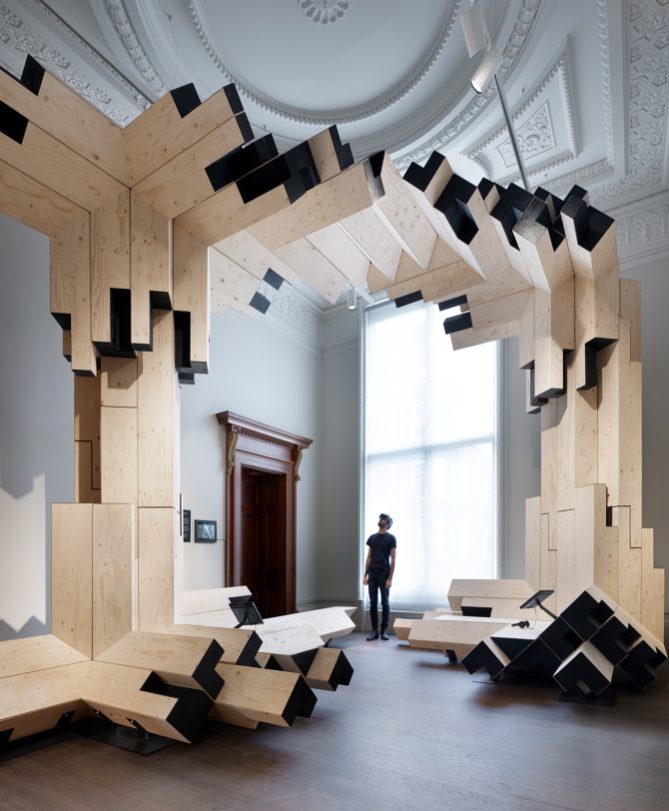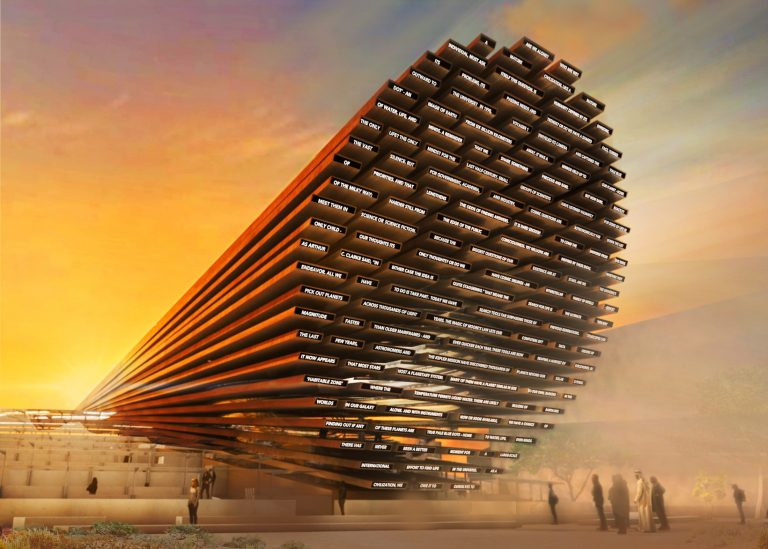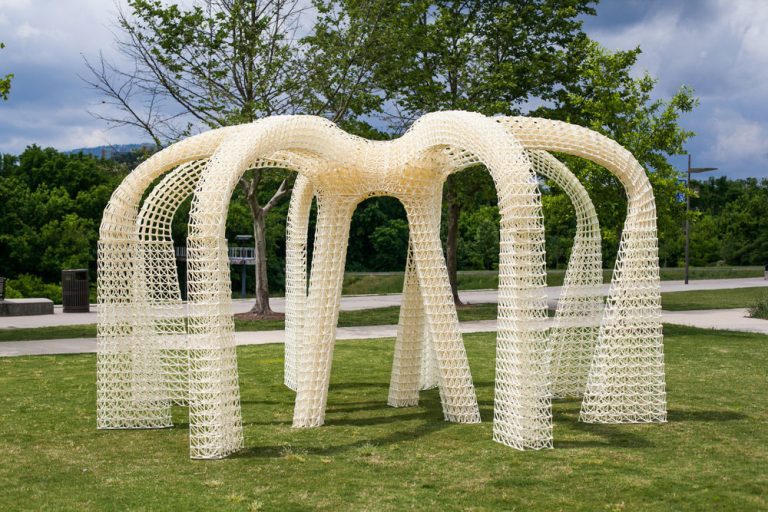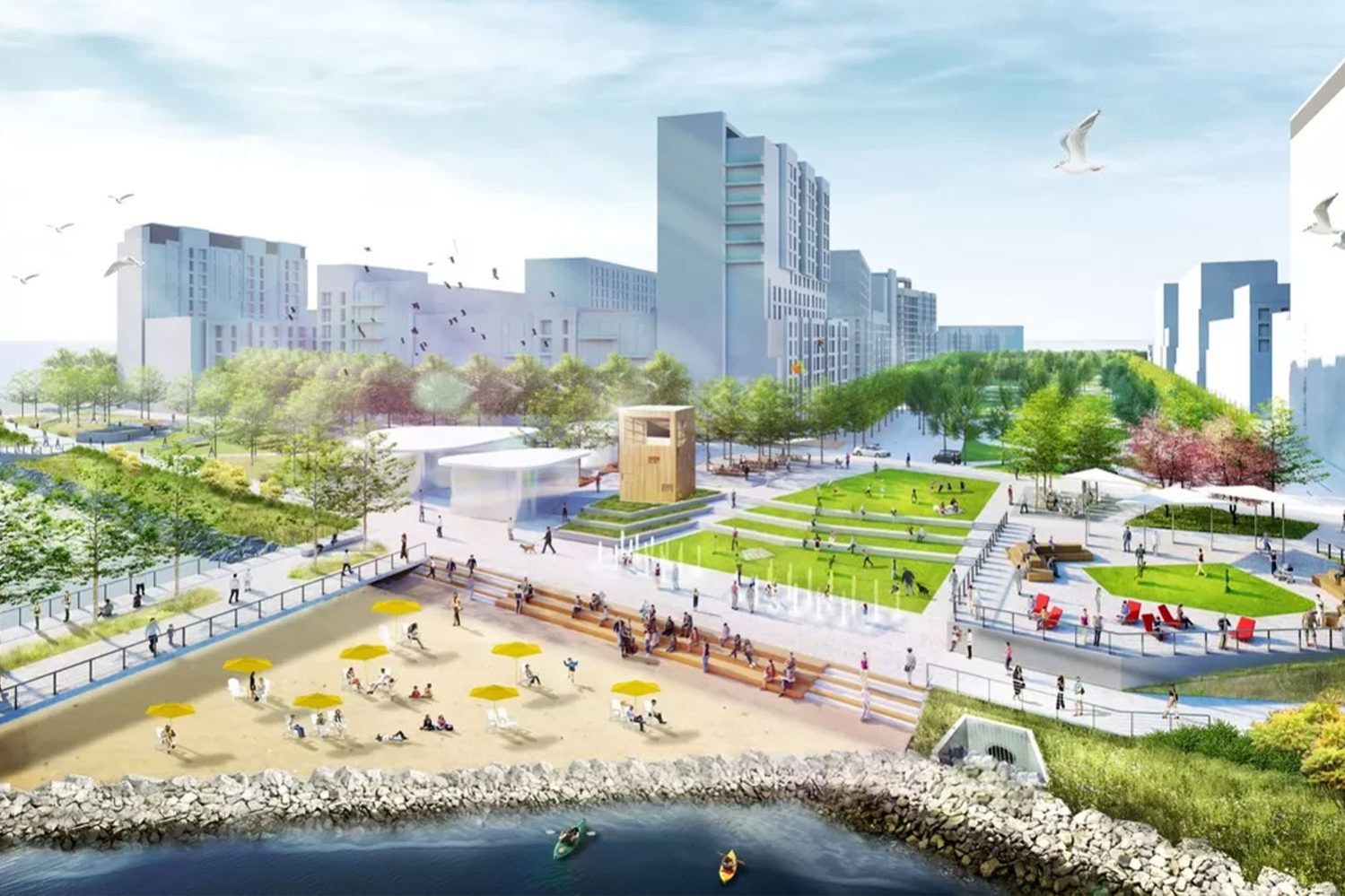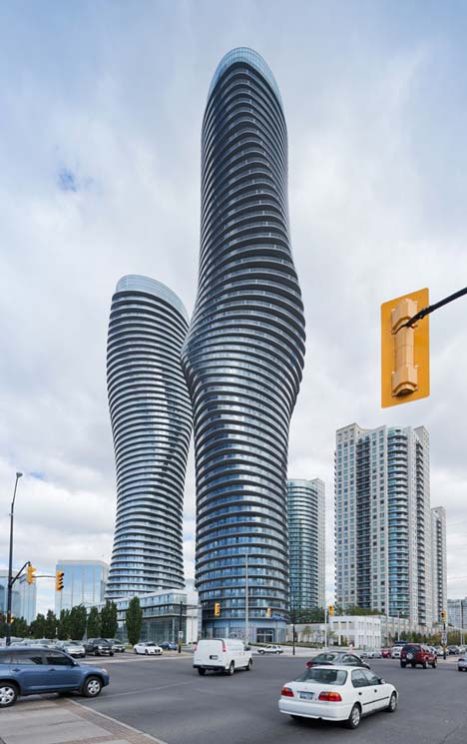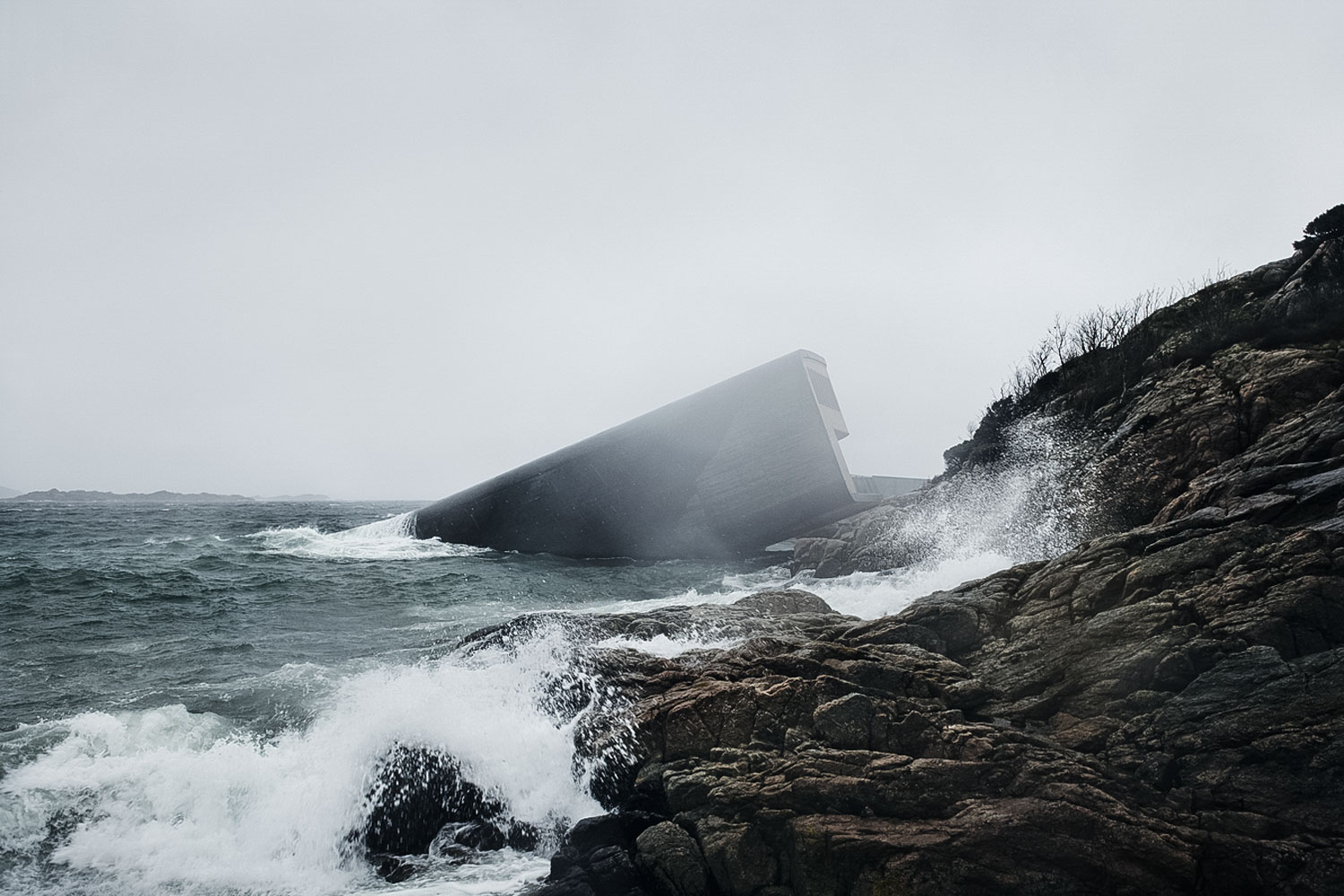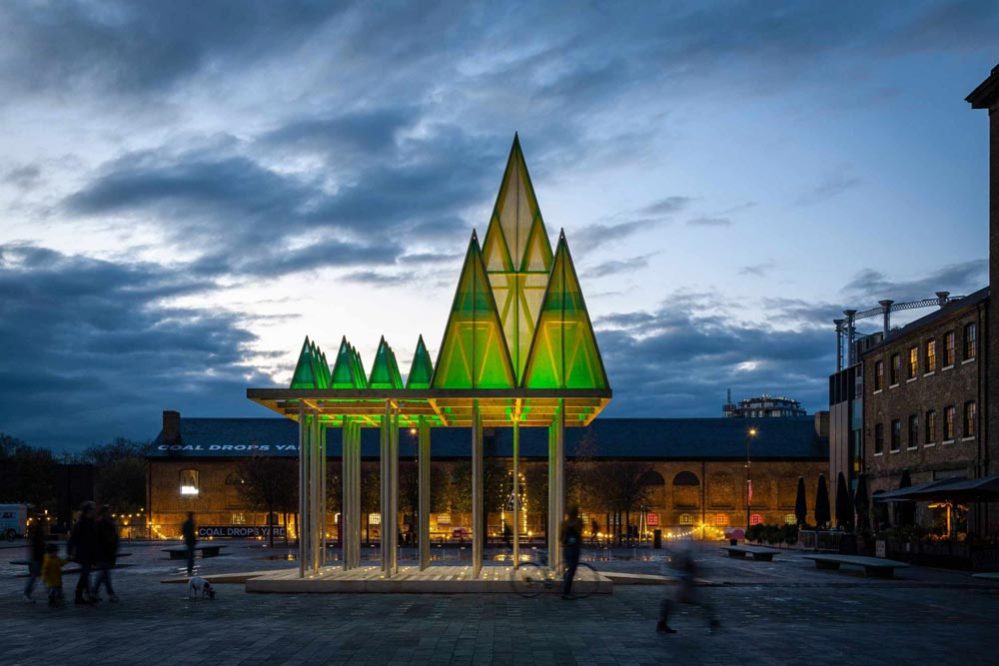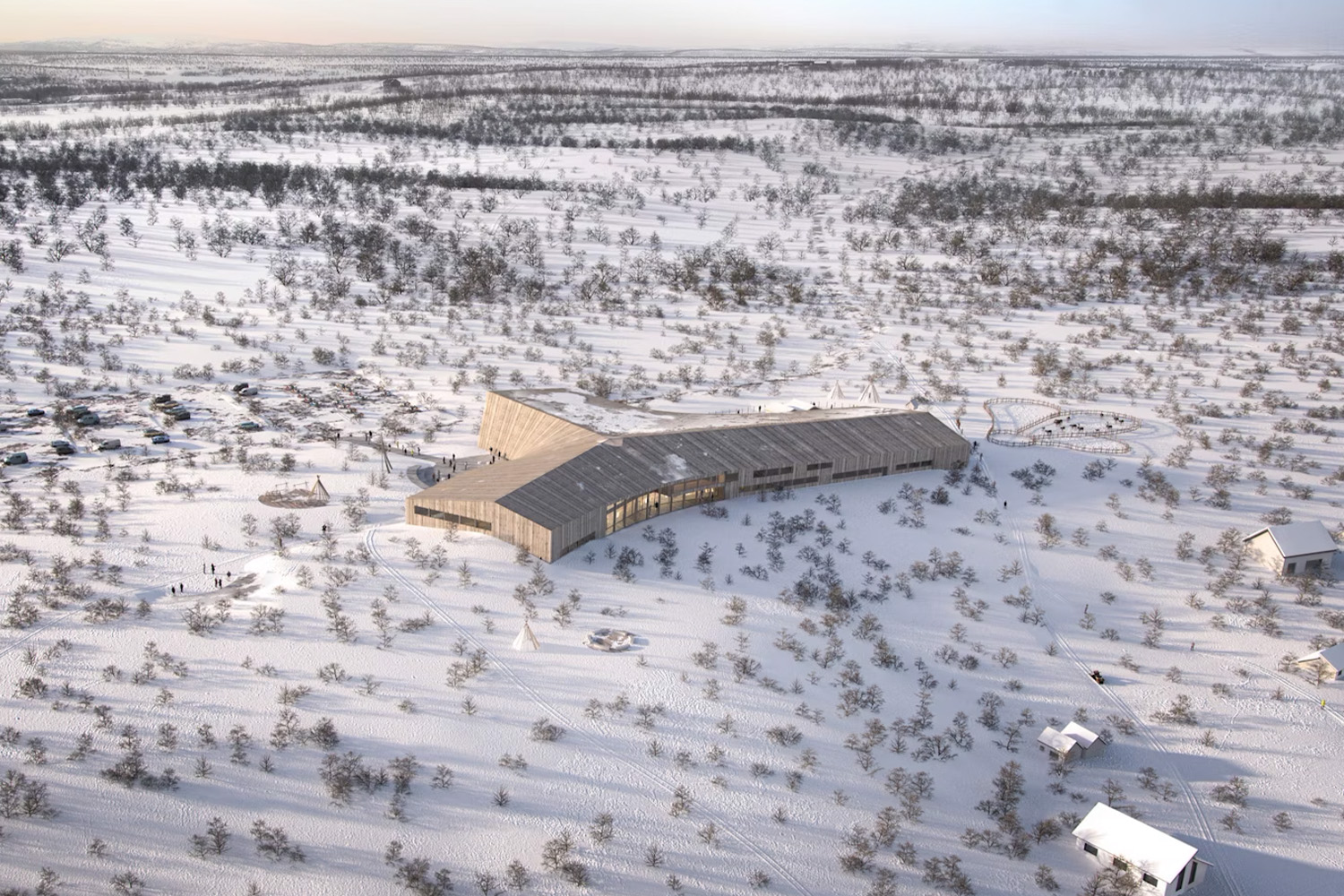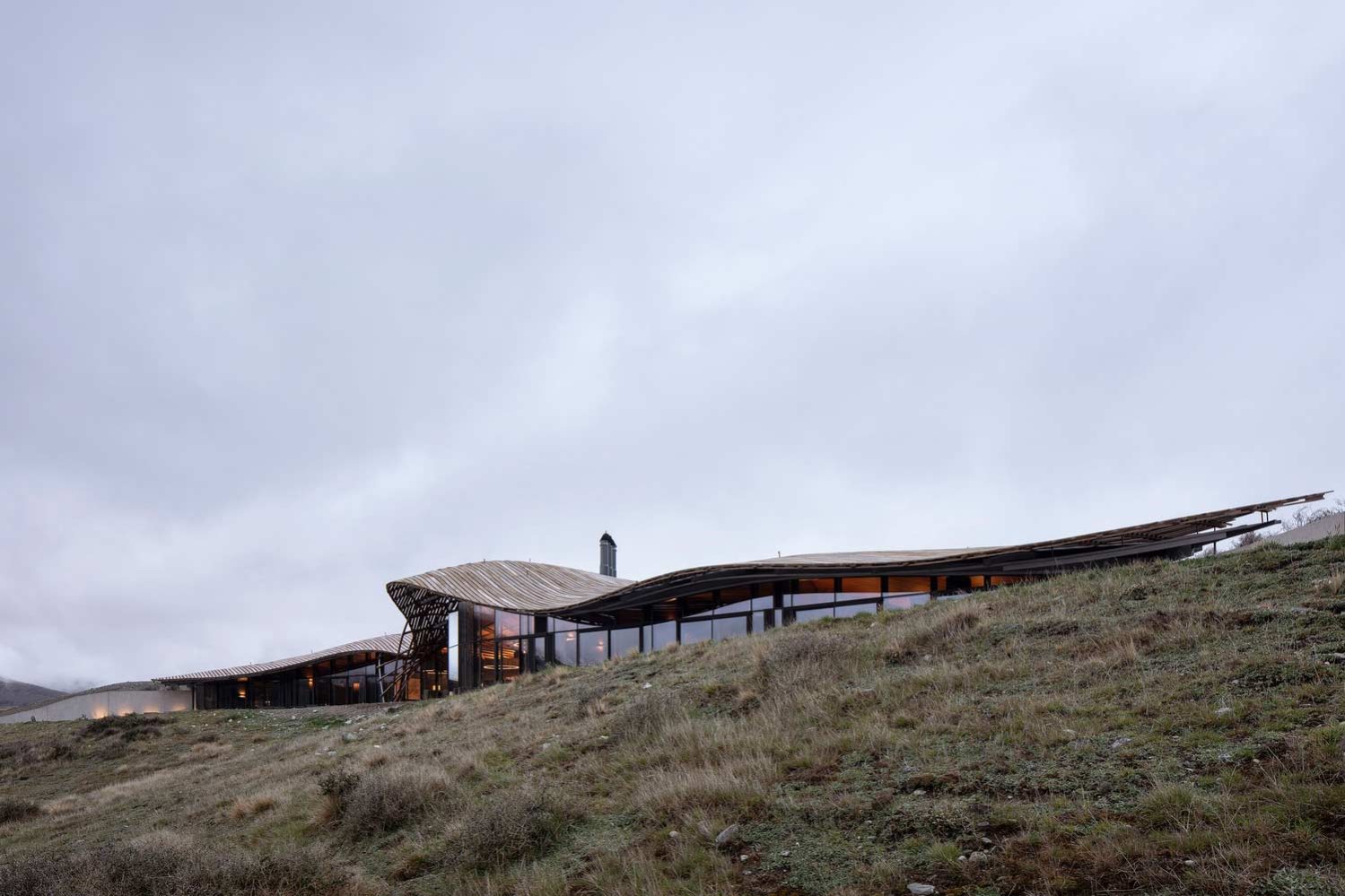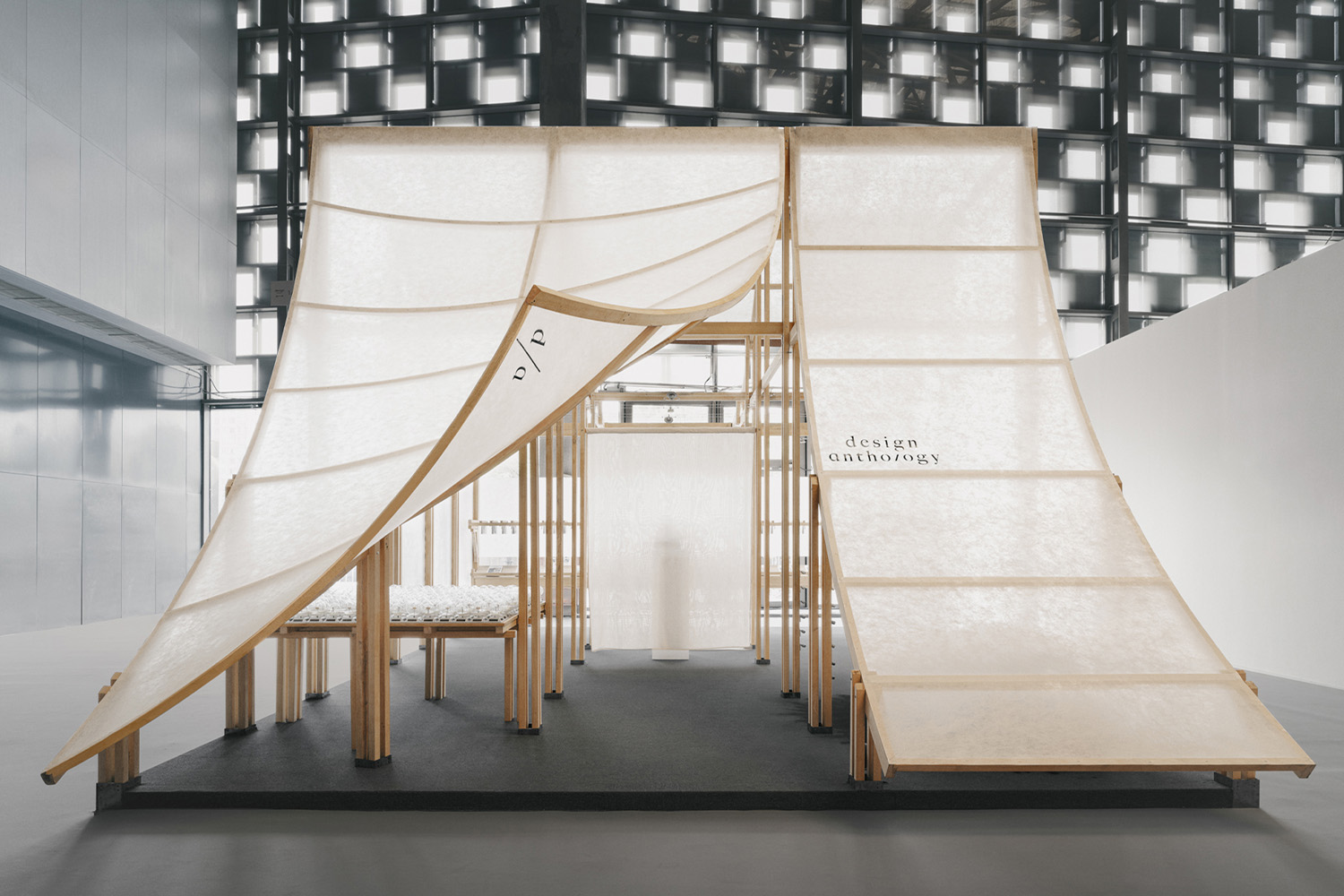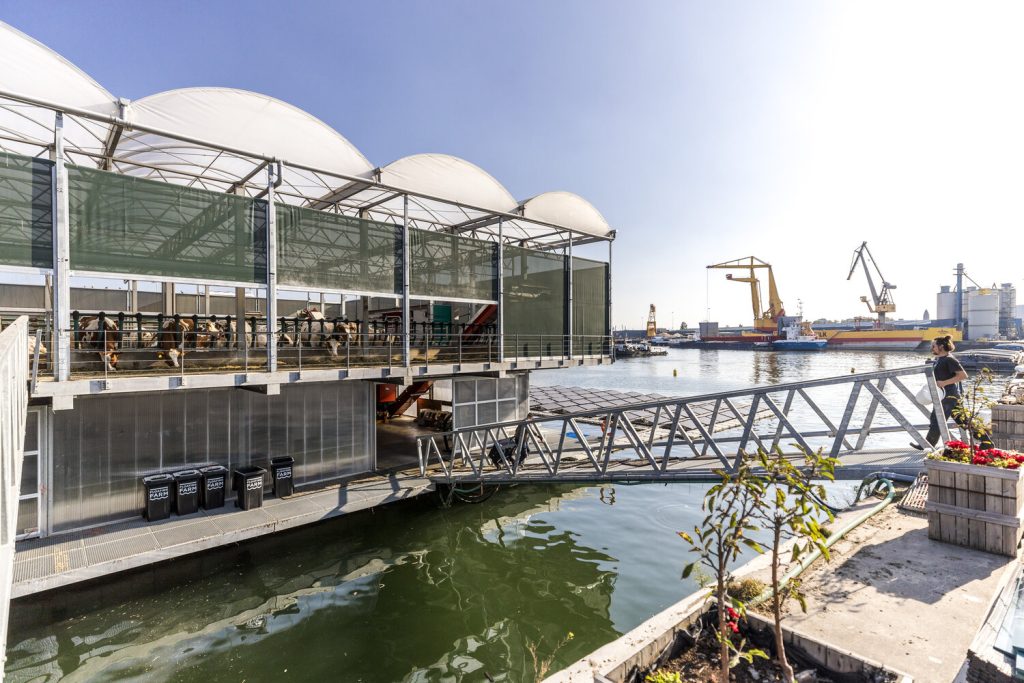
The Floating Farm aims to be a model for sustainable urban agriculture and shows how food production can become less vulnerable to environmental challenges. Long food supply chains cause inconveniences and damage during the process. Any disruption to the transportation system can potentially lead to significant food shortages. Additionally, in the face of climate change, the likelihood of extreme weather events, floods, and other disruptions has become increasingly constant.
The Floating Farm in Rotterdam is the world’s first floating farm, officially opened in April 2020. Starting with the idea to localize food production in order to prevent the negative consequences of unexpected disasters, the first aim was to create a self-sustaining farm on the water. It is a self-sustaining, circular dairy farm located in the Merwehaven harbor in Rotterdam, Netherlands. The farm consists of a barge with a stable for 40 cows, a dairy processing unit, a cheese factory, a shop, and a restaurant.
Floating Farm was conceptualized and launched by Peter and Minke van Wingerden from Beladon, a company specializing in water-based architecture. The design of the farm was executed by the architecture studio Goldsmith. Being one of the firsts in the world, this article aims to highlight the farm’s unusual vision and operation and showcase its timeline, advantages, architecture, and productions.
Timeline

While the first step to construction of the farm began in 2018, the start of ideas, research, and designs dates back to 2012. In 2012, when Hurricane Sandy struck New York City, the entire metropolis faced a dire shortage of fresh food within a matter of days. With the city heavily reliant on thousands of food trucks for daily supplies, the flood-induced disruptions rendered the food supply chain ineffective, preventing trucks from entering the city. During that period, the Floating Farm team observed how lengthy food supply chains and the distance between production and consumers increasingly threatened the resilience of major cities. They also realized that achieving long-term resilience and sustainability in all cities, whether big or small, required further exploration of localization.
The first construction steps in the floating farm project, where localization started as the main goal, were taken in 2018. The farm, which was completed and opened in 2019, started by placing 32 cows. The farm’s products, which serve customers directly with the Business-to-consumer business model, are sold both in the farm’s own store, in local stores, and online.
Advantages
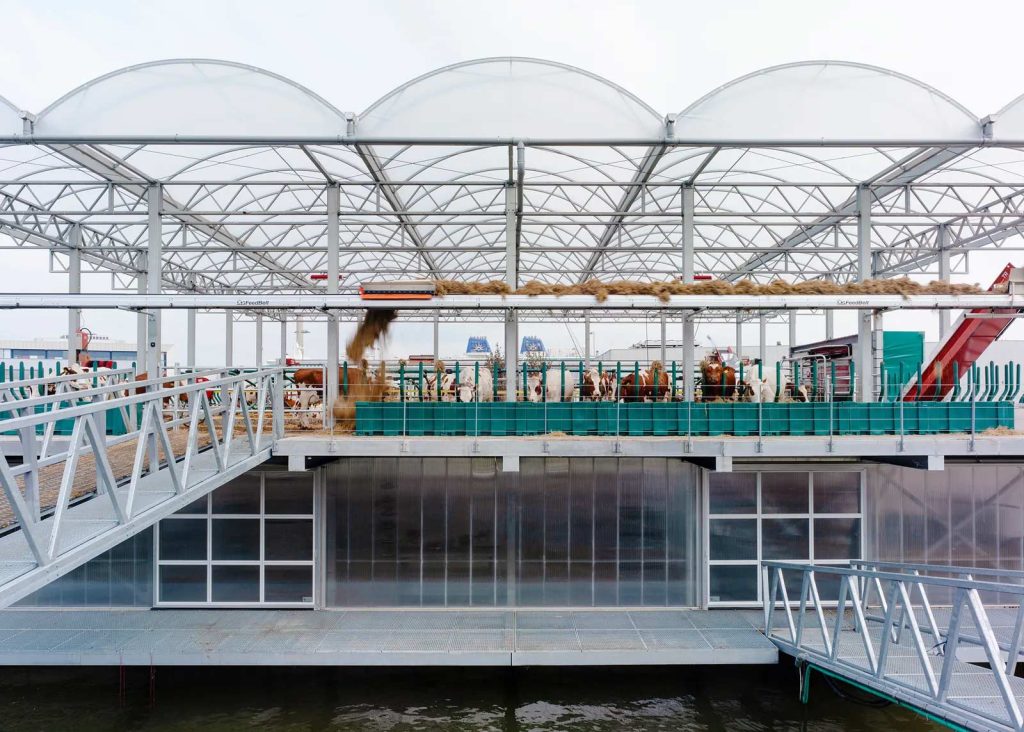
Against some challenges in food production such as land scarcity, waste, and carbon footprint, the Floating Farm showcases advantages and an initial model for further developments. To list some advantages:
- Localized Food Supply Chains: Producing food closer to the point of consumption reduces reliance on long-distance transportation, thereby minimizing carbon emissions associated with food transportation and enhancing food security.
- Land Scarcity: It allows for food production within densely populated urban areas where traditional agriculture might not be feasible due to limited space.
- Resilience: Being a floating structure, it is resilient to flooding and other climate-related challenges, ensuring consistent food production even in the face of extreme weather events.
- Innovation Showcase: It serves as a model for innovative and sustainable urban agriculture practices, inspiring other cities to explore similar solutions to address food security and sustainability challenges.
- Educational Opportunities: The Floating Farm serves as an educational resource, raising awareness about sustainable food production practices and fostering a deeper understanding of urban agriculture among the local community and visitors.
Architecture
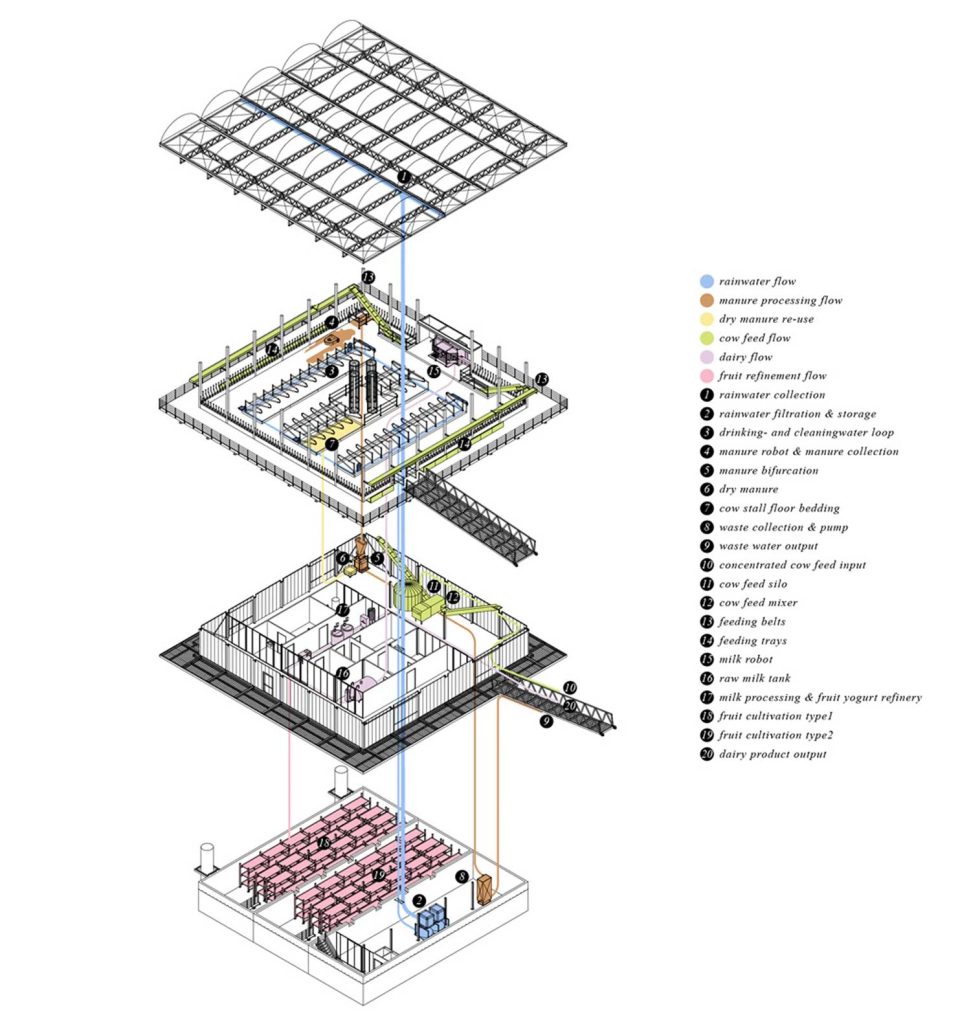
Designed by architectural studio Goldsmith, the structure was developed for the future and, therefore, to follow the circular design approach. The Floating Farm is a compact structure comprising three stacked layers, accommodating 40 dairy cows. It is situated in the harbor of the M4H development zone in Rotterdam, an area dedicated to promoting innovative and experimental endeavors.
Drawing inspiration from nautical principles, the design of the farm emphasizes organization, structural integrity, and material selection to optimize buoyancy and stability. As a result, heavy structural and technical components are located in the submerged section of the building, while transparent and significant functions are housed in a lightweight structure above. This arrangement creates a three-layered facade, ranging from concrete to translucent polycarbonate to fully open spaces.
The farm’s infrastructure includes three interconnected concrete pontoons, housing facilities for fruit production (used in yogurt), rain- and wastewater recycling, and additional installations. The upper floor serves as the main factory, integrating milk and yogurt processing, feeding systems, manure handling, and retail operations. A covered cow garden, supported by robotic systems for manure cleaning and milking, prioritizes animal welfare considerations. Two galleries encircling the cow garden, linked vertically by steel bridges, create an educational pathway for visitors to observe farm activities without disrupting operations, offering insights into the farm’s processes.
Productions
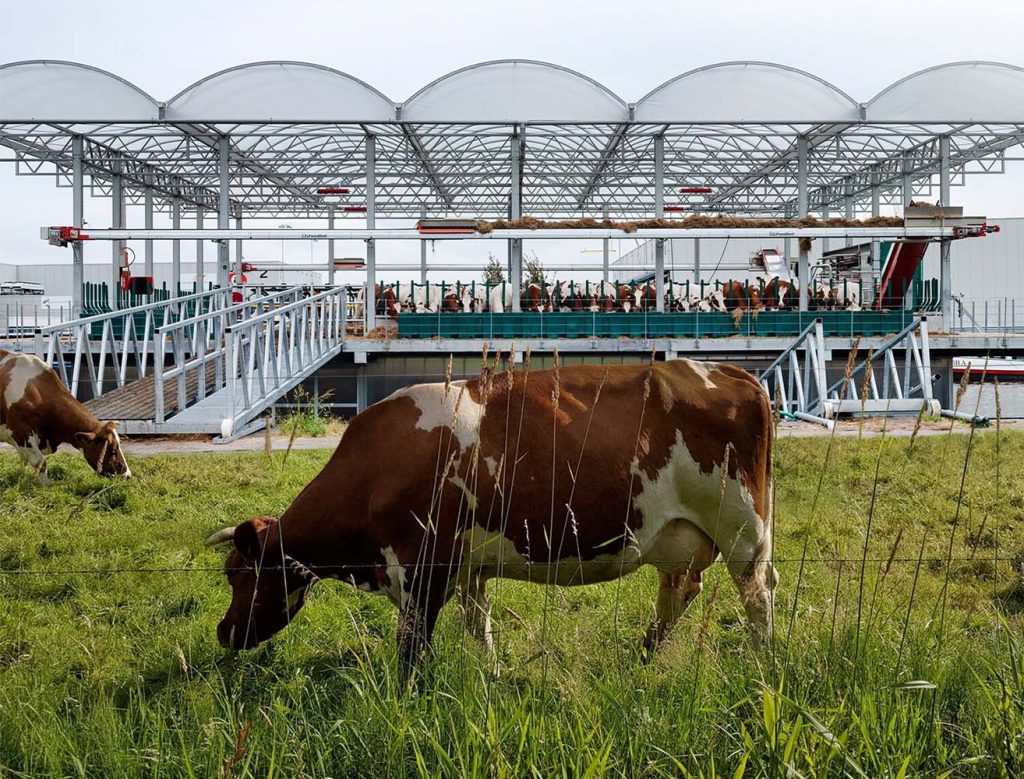
Floating Farm’s adoption of the circular agriculture principle also affects the resulting production. It emphasizes this circularity not only in dairy products but also in everything that comes out. While the floating solar panels supply energy to the farm, rainwater is also accumulated and filtered for the cows to consume. The cows are also being fed by the waste that comes from the city, such as grass, beer broth, and potato peels. While cows are the main users of the farm, their inevitable waste and excrements are also being adopted to the circularity. In this context, the manure is also collected, processed, and sold as fertilizer to feed cities’ parks and plants.
The main products of the farm include milk, yogurt, and butter. They are all prepared according to traditional methods, with passion and natural ingredients only. Floating Farm products, which have become highly demanded by local consumers and the market, are available for sale in the farm’s own shop, local markets, and online websites.
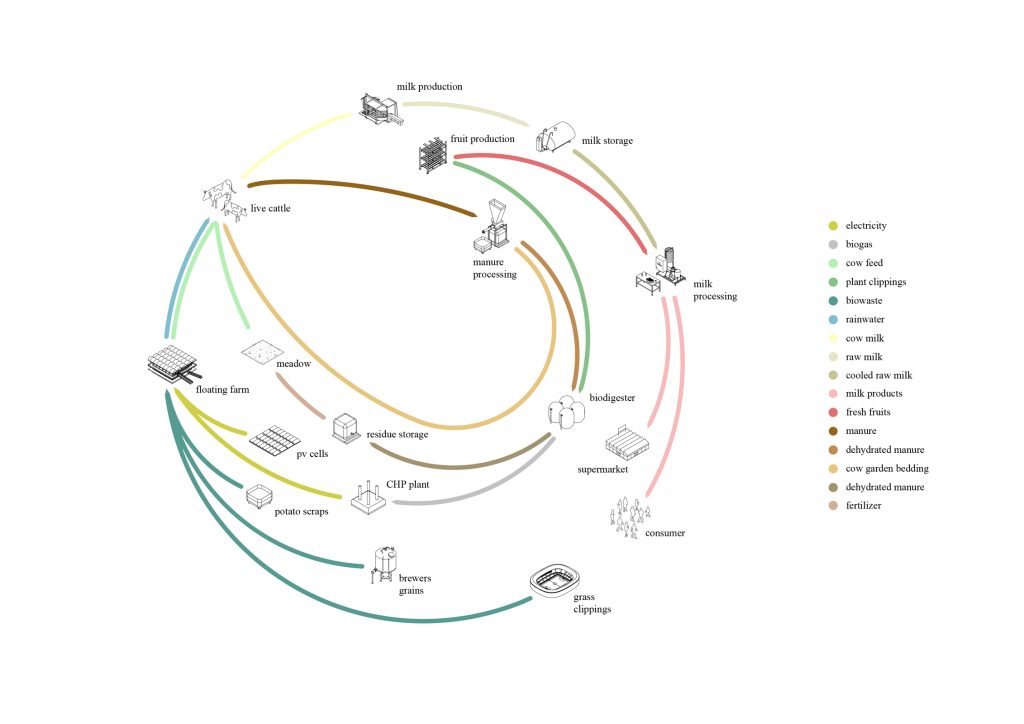
The Floating Farm is a popular tourist destination in Rotterdam. It has been featured in numerous media articles and documentaries. Floating Farm, which aims to influence the food production system of the future and continues to develop in this direction, has Sustainable Development Goals determined from a broad perspective. In collaboration with local authorities, businesses, and organizations the team continuously works on improving the way they operate as well as the community around them.
The primary SDGs of the farm in this perspective include no poverty, zero hunger, quality education, industry, innovation, and infrastructure, sustainable cities and communities, climate actions, and partnerships. It’s important to note that the Floating Farm concept is still in its early stages, and more research is needed to assess its long-term viability and scalability. However, the initial results and potential benefits are promising, making it a significant development in the pursuit of sustainable food systems.


